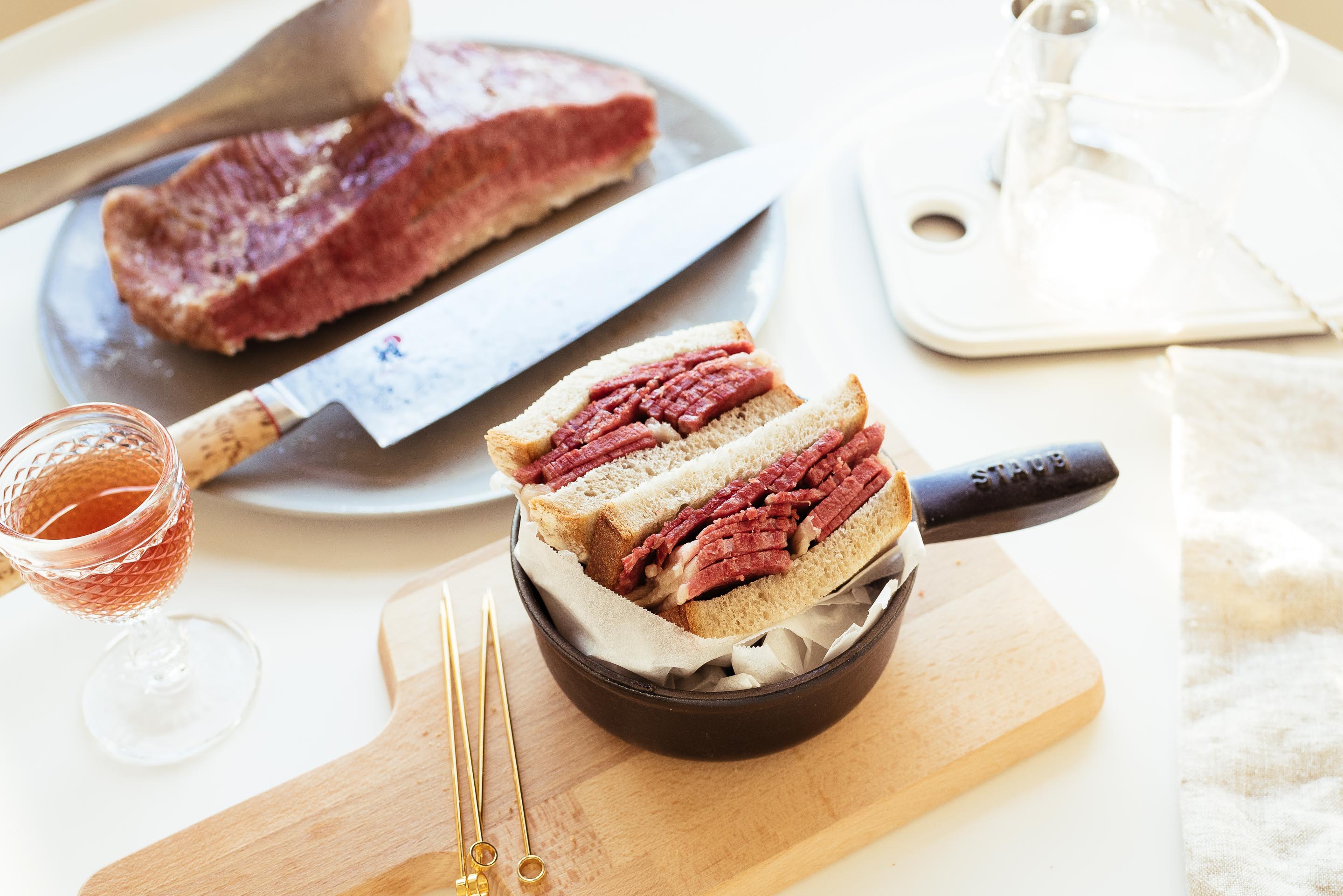
This is one of the easiest corned beef recipes you’ll find around, but despite that, I think it’s one of the best, most impressive recipes you could make. There’s probably not another recipe with so few ingredients and effort needed to produce such a great product. Anyone who is remotely interested in cooking (and not a vegetarian) should try curing meat at home – it opens up a whole new world of cured meat possibilities. Better yet, while cured meat from a deli or charcuterie is often incredibly expensive, making it at home is so, so cheap. I’m going to geek out a little here so feel free to jump to the recipe instead.
When it comes to food, I’m a sucker for two things: big difficult sounding cuts of meat and big difficult sounding recipes that seem obscure and impressive – but are actually almost completely passive and zero effort. This one is both. I used a gloriously marbled and beefy tasting brisket from Lone Mountain Wagyu (genuinely one of our favorite beef suppliers – though regular beef brisket works wonderfully too) and it was definitely as close to zero effort as a recipe can get. This recipe takes 6 days to make, but almost all of it is passive time where the beef is just chilling out in the fridge. The rest of the time is the beef braising in the oven, so I think the total active time for this recipe is somewhere between 5 and 10 minutes.
Pastrami vs Corned Beef
To be perfectly honest, I’d love to be making pastrami at the same time as this corned beef. Although I’ll be the first to extol the virtues of corned beef, I’ve always had a soft spot in my heart for pastrami from days of misspent youth and random late night chowdowns with friends at Katz’s years ago. We don’t live near any good delis these days, so before this moment, pastrami was just a long lost dream. Now it seems almost in reach.
The difference between corned beef and pastrami is just the part of the animal used (pastrami uses the fattier part of the brisket closer to the navel) and the cooking process (corned beef is boiled, pastrami is smoked), so as long as you have access to a smoker, you could be making both at almost the same time. And if you do have access to a smoker, you definitely should double this recipe and smoke half of the meat because I think it’s an undeniable fact that the best sandwiches contain both pastrami and corned beef.
The brisket we have is actually perfect for pastrami, but after doing a deep dive on the internet for how to smoke meat while living in the middle of a dense city, I came to the conclusion that whatever I did, it probably wouldn’t come close to the real thing, and would be five times as much effort for a product that most people would agree is on par with the much, much simpler corned beef. For anyone without a big backyard (like us) corned beef is clearly the easier choice.

Corned beef on local rye bread
Pink Salt & Pickling Spice
Although this recipe contains only 5 ingredients plus water, one of them – pink salt – might be a little harder to find. Pink salt, not to be confused with pink Himalayan salt, is actually regular salt mixed with sodium nitrite and dyed pink so that it’s not eaten by accident, and exists to prevent botulism (and listeria) and give cured beef its signature flavor. Should you use it? In theory you don’t need it but it’s completely safe and so easily available on Amazon as well as locally at any good gourmet store that you should take the extra time to find it – it’s also called instacure #1, prague powder 1, or curing salt. Locally, we had to ask for it behind the counter.
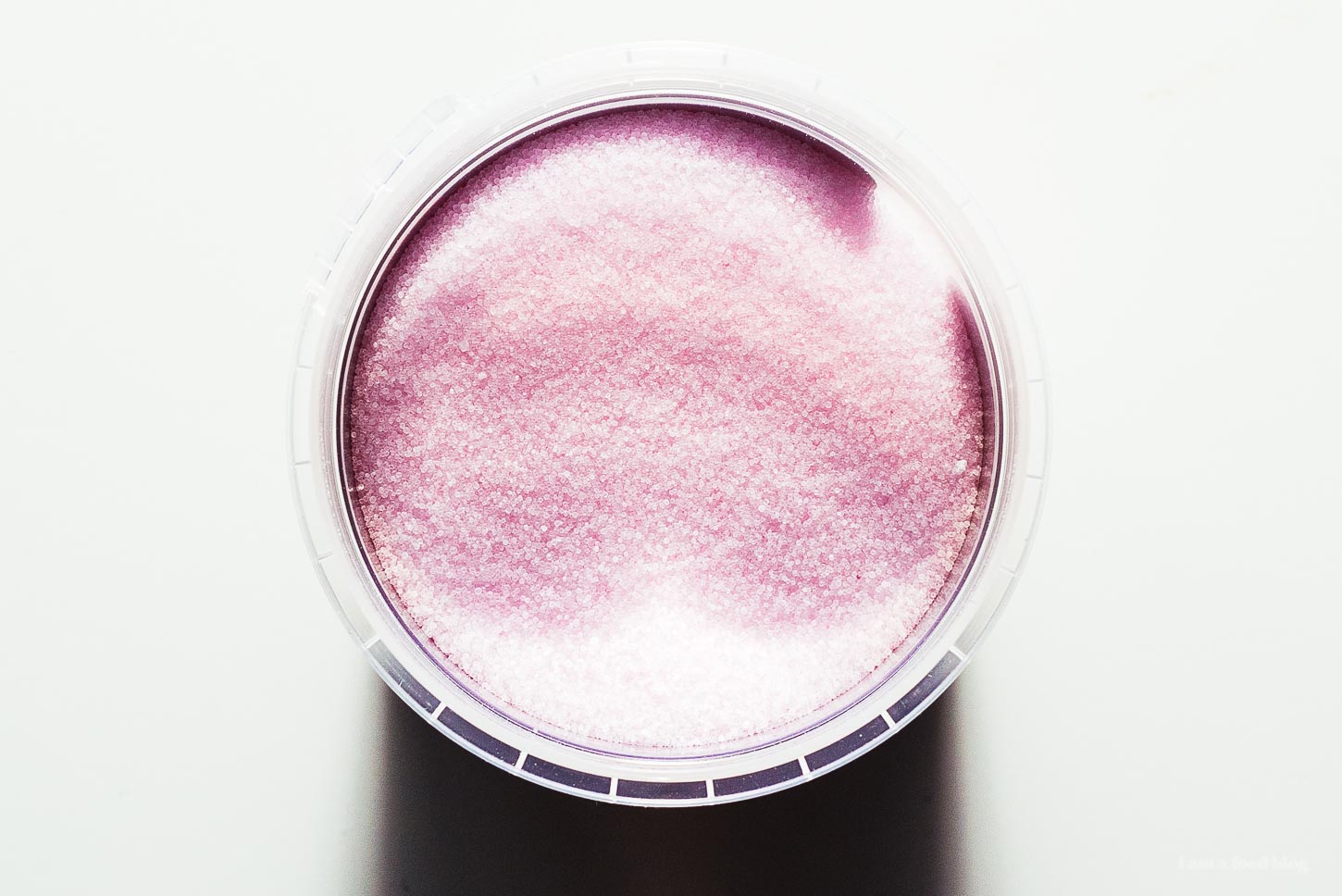
Pink Salt/Sodium Nitrite/Instacure #1/Prague Powder 1
The other important ingredient is pickling spice. We use it twice: once to cure the meat and again while braising the meat. Pickling spice is one of those ingredients that everyone seems to have a secret recipe for, and seems to involve cinnamon sticks, bay leaves, mace, nutmeg, mustard seeds, etc etc. There are many recipes on the internet, but they all share in common a need to buy a ton of spices. I avoided all that and just went to the bulk section of the supermarket and bought enough generic pickling spice for the recipe, and it turned out great.

A little grey before the braise
Results
In Steph’s words, the corned beef turned out incredibly OMG dyingly good. It was red & pink all the way through, tangy, beefy, and delicious. The wagyu’s marbling gave it an extra nice little boost in both texture and taste. Steph planned a lot of dishes to make with our 3lbs of beef, but we’ve eaten almost all of it as sandwiches on rye (for me) and hot salt beef beigels (for her) so there’s really not a lot left to work with. It was almost scary how fast we ate the brisket. I’m confident this is one of those recipes where if you don’t live next to a world-class deli in a top-tier city like NYC or London, this is the way to go.
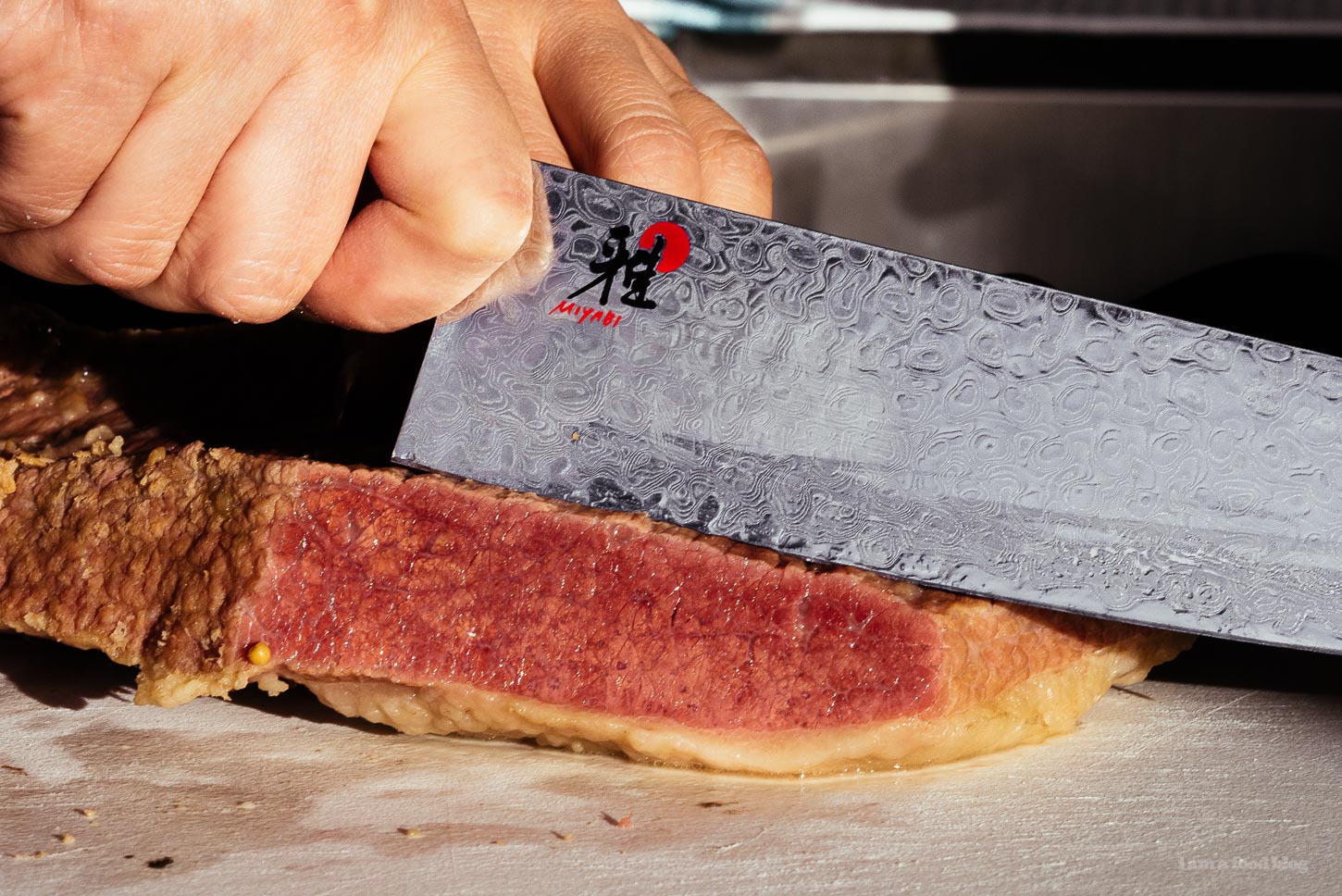
Dat marble (the hand model is Steph)

No need to be in London!
Going the distance
This was a super minimalist recipe, but next time around I plan on putting in a little extra effort:
To make the curing liquid, you should bring your salt, sugar, pink salt, and pickling spices along with 4 cups of water to a boil. Then, stir in ice and cold water until you reach about the 1 gallon mark (16 cups total) and wait until the mixture cools completely before using. I didn’t do this and it turned out great, but this is what I plan on doing next time.
In terms of curing time, this recipe suggests about 6 days (and I’ll be honest, I only went 5 days) Katz’s does theirs for 4 weeks. Next time around I’ll let the cure go for 2 weeks at least.
For the pickling spice, although this time I went with store bought and it tasted more than fine, sometime in the next few tries, I’ll experiment with a Vietnamese inspired pickling mix.
Conclusions
We’d planned a lot of dishes to use this beef for: corned beef hash, corned beef fried rice, corned beef with cabbage and potatoes (of course, for St Paddy’s), corned beef chow fun, corned beef ramen, corned beef grilled cheese, corned beef nachos, corned beef udon, the list goes on and on. But, as mentioned above, we ended up eating all the brisket before any of that had a chance. This is a recipe that I’ll be making again and again though – the next brisket is already curing in the fridge. Hopefully the next one lives longer than 2 days and has a chance to be turned into one of the fun dishes above. Stay tuned.
Happy St. Patrick’s Day!
-Mike
The Easiest Corned Beef Recipe
Yields: 1 Corned Beef Brisket
- 3/4 cups kosher salt
- 1/2 cup sugar
- 2 teaspoons pink salt
- 4 tablespoons pickling spice, divided in half
- 1 beef brisket, 3-12 lbs
- 1 gallon of water (16 cups or 4 liters)
In a container large enough to contain the brisket plus water, combine all of the water, salt, sugar, and pink salt. Stir until mixed, then add 2 tablespoons pickling spice. Stir briefly until mixed again, then add the brisket. Weigh the brisket down with a plate. Seal and store in the fridge for 6 days total. After 3 days, give the brisket a flip and weigh down again with the plate.
After 6 days, preheat your oven to 200ºF. Find an oven-proof pot (such as a dutch oven) large enough to hold your brisket and fill it halfway with water. Set it over high heat. Carefully remove the brisket from its container and give it a brief rinse. Add brisket and the remaining 2 tablespoons of pickling spice and wait until the pot comes to a boil, then transfer to oven and braise for 4 hours.
Once done, remove the brisket from the braising liquid from and slice thinly. Store any uneaten brisket with the braising liquid and reheat together to retain maximum moisture. Brisket keeps for 3-5 days in the fridge.
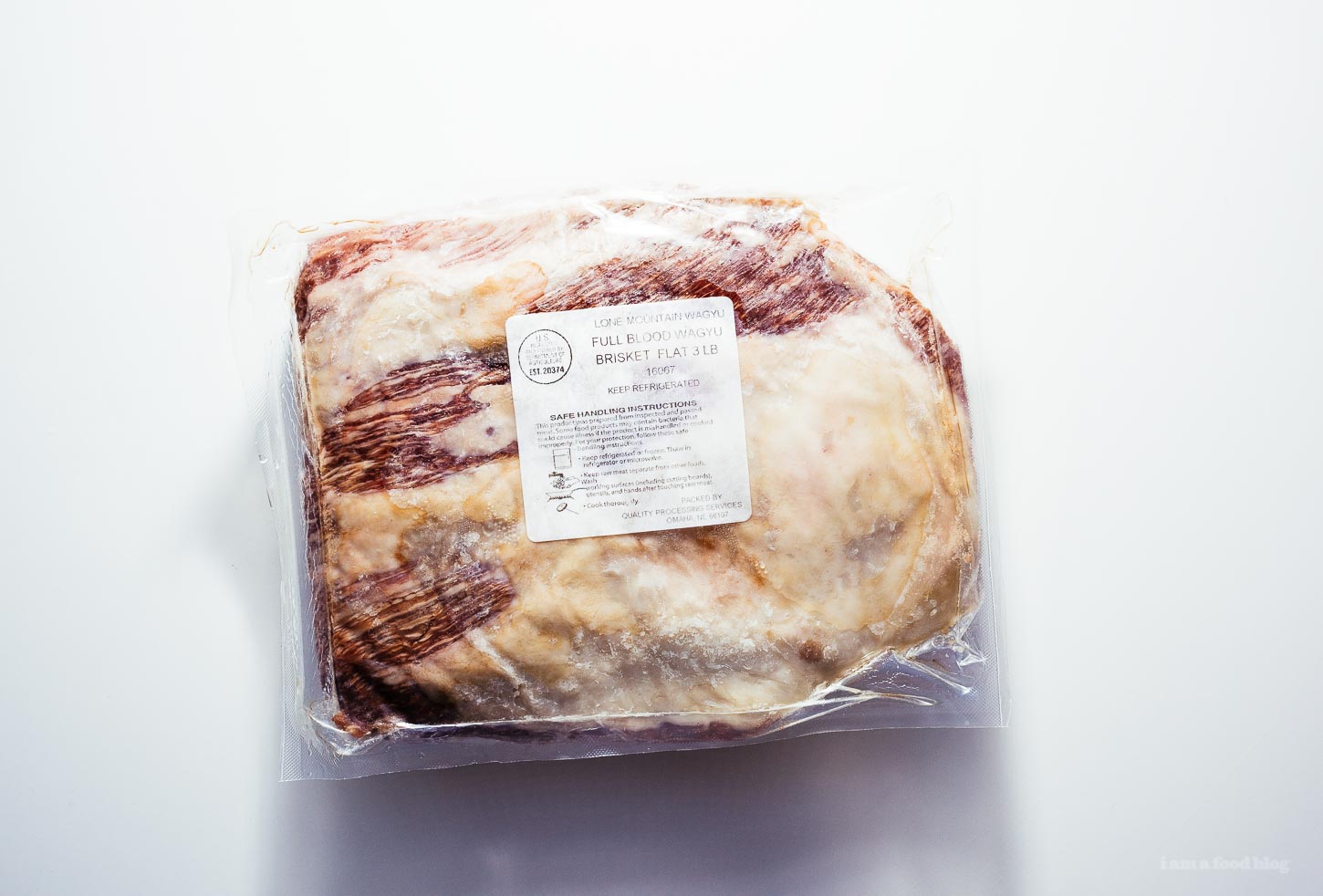
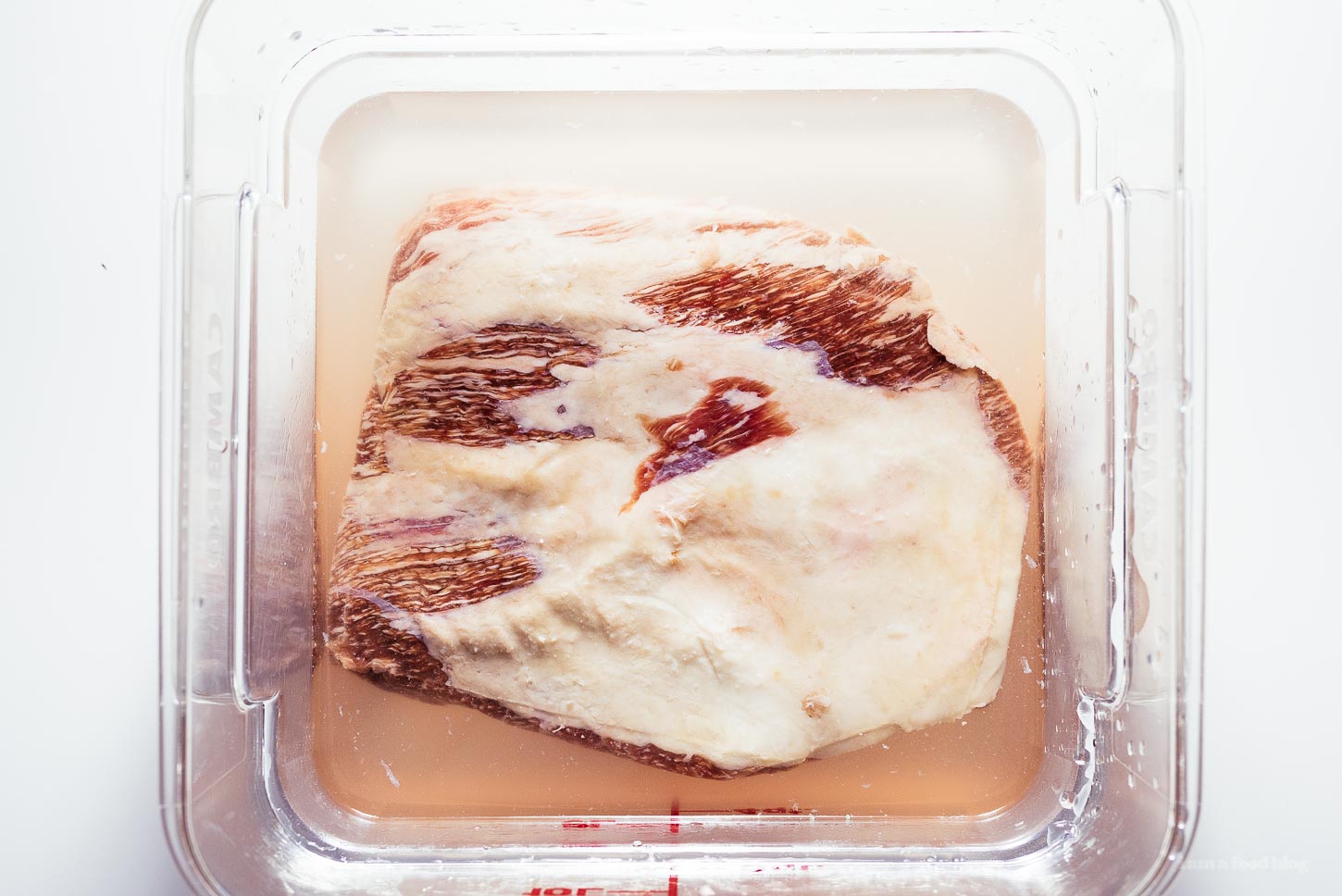
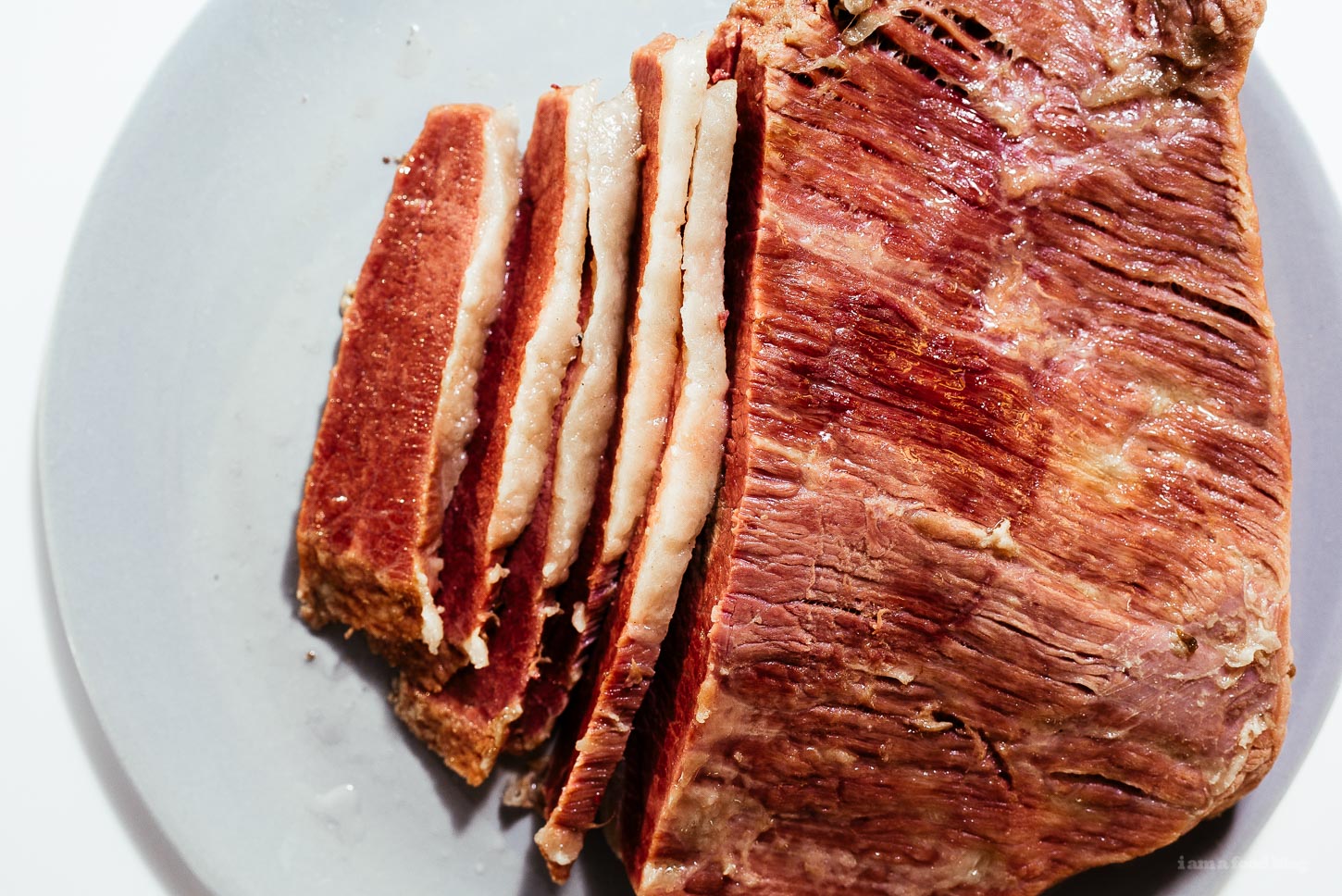

Loving some of the science-y tidbits in this post! I’ve never cured meat myself, but I’m a huge sucker for it…so I may just have to try it now! xo
We never tried curing meat at home. I always thought it might be a complicated process but now I learned that most of the time is passive anyway. Thanks for four your insights! I will give it a try tomorrow!
This looks great! I need to make this at home soon.
Wow, this looks really good and easy to make. Will definitely try sometime!
This a very straightforward cure, much less complicated than some I have seen. Any thoughts on sous vide vs braise – time and temperature?
Your Lone Mountain Wagyu brisket brought me here. Lone Mountain beef is the best taste and texture for US domestic Wagyu.
Some things to think about. Sodium nitrite gives your brisket a nice pink color and changes the flavor a bit but is not needed for safety if curing with salt brine in the fridge for a week. Too cold, too salty and too short a time for slow growing botulism to grow. ina week’s cure time. Also ALWAYS add the pink salt AFTER your brine has cooled. But it seems you used a no boil brine method. Boiling the sugar and salt with the water kills the bugs but will break down the nitrite. Sodium nitrite is the special stuff for a fast active cure (nitrate is the slow cure and requires fermentation or other special techniques to use safely) but can break down when exposed to hot or boiling water. I have been told to boil the water first, add salt a sugar to dissolve and then add the pink salt and spices as the water has cooled off. If the spices are whole (mustard seeds, bay leaves and allspice all whole) then you can add them to the water while it is still hot. The mustard seed will lose pungency when exposed to hot water and the spices can also become less potent when boiled. Nitrite consumption is positively linked to an increase in stomach and esophageal cancers. So homemade corned beef can be safer than the stuff you buy if you leave out the nitrite or go with a low level just for a pink colored corned beef brisket but still much less than needed for long cured commercial corned beef. Commercial cures require it for making a Botulism free food that can be stored for months without going bad but the bad bugs grow so slowly in your fridge that 1 week is more than in the safety window.
from HomePreservingBible.com:
Because corned beef is cooked after curing, sodium nitrite is not needed to control botulism. However, it does impart the characteristic pink color and flavor. If a pink color is all that is desired, as a little as 40 parts per millions (ppm) or 1 level teaspoon (0.20 ounce) per quart of water achieves the desired result. For preservative effective, more curing salt can be used, up to 200 ppm (one ounce or 5 level teaspoons per quart of water), the maximum amount recommended by the USDA for safe consumption. Sodium nitrite is toxic in large amounts; under no circumstances should you use more than 1 ounce of curing salt #1 per quart of water when making a brining solution.